Maximize Practice Effectiveness With Lacrosse Ball DrillsMaximize Practice Effectiveness With Lacrosse Ball Drills
Introduce Lacrosse Ball Drills to Improve Stick Skills
Incorporating lacrosse ball drills into training regimens is a great way for players to boost their overall stick skills. These specialized drills using lacrosse balls provide a number of benefits that directly translate onto the field during gameplay. By spending time cradling, scooping, passing, catching, and shooting a lacrosse ball, players can strengthen the intricate hand and arm muscles used to adeptly control their sticks.
Cradling a ball around the head, shoulders, and waist with one hand or switching between hands targets the forearms, wrists, and hands. This repetitive motion improves cradling form, endurance, and overall ball control even when defending players attempt checks. Frequent cradling drills enhance hand-eye coordination required for maintaining possession while running down the field or dodging opponents. Gripping and maneuvering a lacrosse ball also augments hand and forearm strength necessary for secure holds and swift passes.
Scooping ground balls requires getting low for optimal leverage and quickly guiding the ball into the head of the stick in one fluid motion. Practicing this movement pattern with lacrosse balls at various angles and speeds helps ingrain proper technique. Muscle memory develops over time through ongoing scooping reps to capitalize on ground ball possessions.
The most elite lacrosse players have fast, accurate passes and can snag errant throws with ease. Throwing, catching, and quick stick passing drills using lacrosse balls helps engrain the footwork, hand positioning, release, and follow-through needed for pinpoint passing. Working on these mechanics smooths out the throwing and catching motion until it becomes second nature. Developing deft passing abilities provides a major advantage for efficiently moving the ball around the field.
Shooting is perhaps the most critical skillset in lacrosse as outscoring opponents is ultimately the name of the game. Shooting drills with lacrosse balls allow players to zero in on their shooting form and power from various angles around the goal crease area. Repeated practice establishes muscle memory for shooting on the run, step-down shots, question mark shots, behind-the-back shots, and other deceptive shooting maneuvers used to fake out goalies.
As players gain shooting proficiency over time, their shot speed, accuracy, and scoring percentages will improve dramatically. Defenders will have a much tougher time stopping lightning-quick shots that find the corners of the net.
In summary, incorporating lacrosse ball handling drills into training is crucial for taking stick skills to the next level. The repetitive motions build hand strength, endurance, control, passing, catching, scooping, cradling, and shooting prowess that translate into better performance during live game action. Players who are serious about maximizing their abilities should devote ample time to refining their fundamentals with lacrosse balls.
Improve Cradling Technique with Lacrosse Ball Drills
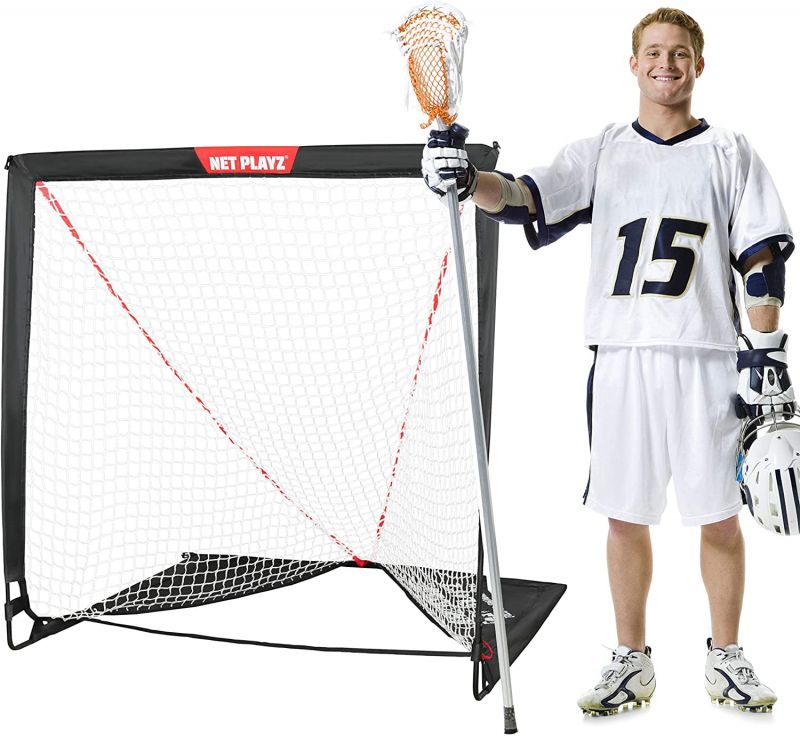
One of the key benefits of incorporating lacrosse ball drills into training is enhanced cradling ability. Cradling is the fundamental motion of swirling the ball in the pocket of the stick head in a continuous motion. Elite lacrosse players have mastered cradling to the point where they can maintain complete control of the ball while running at full speed down the field or dodging defenders.
Practicing cradling with lacrosse balls engrains proper form and strengthens the forearms, wrists, and hands. By cradling the ball around the head, shoulders, and waist areas in different motions and directions, players can target the intricate muscles involved in controlling the stick.
For example, starting with two-hand cradling directly in front recruits muscles in both arms and hands. Switching to one-handed cradling across the body also works the stabilizing muscles on the opposite side. Cradling figure-8s around the knees challenges dexterity and coordination. Tossing the ball up lightly and recradling smoothly develops quick reaction time. Cradling behind the back while walking forward forces an upright posture and activates core muscles.
These various cradling drills with lacrosse balls build hand-eye coordination required for maintaining possession while maneuvering on the field. The repetitive motions also increase forearm, wrist, and hand endurance. Stronger forearms allow for secure cradle control even as defenders try to dislodge the ball.
Speed cradling is another essential technique to practice. Quickly swishing the stick through the air while sprinting with fast footwork tests hand speed and finger responsiveness. Speed cradling drills build the dexterity needed to retain possession when dodging defenders at full velocity.
Advanced players can elevate the difficulty by cradling with both hands behind their backs or switching hands in a crossover cradling motion. Mastering these moves takes cradling competence to the highest levels.
By dedicating sufficient time to lacrosse ball cradling drills, players engrain proper form until it becomes second nature. The motions build endurance, strength, control, hand-eye coordination, and quick reaction time. Developing a high cradling IQ is crucial for maintaining possession in crowded game situations. Players with crisp cradling capabilities have a distinct edge over opponents when advancing the ball upfield or attacking the goal.
In summary, lacrosse ball cradling drills are invaluable for honing this fundamental skillset. The repetitive practice isolates and strengthens the muscles involved while improving overall cradling efficiency, dexterity, and control. Players who are serious about maximizing their abilities should incorporate a variety of cradling drills into their training routines.
Boost Scooping Skills with Lacrosse Ball Drills
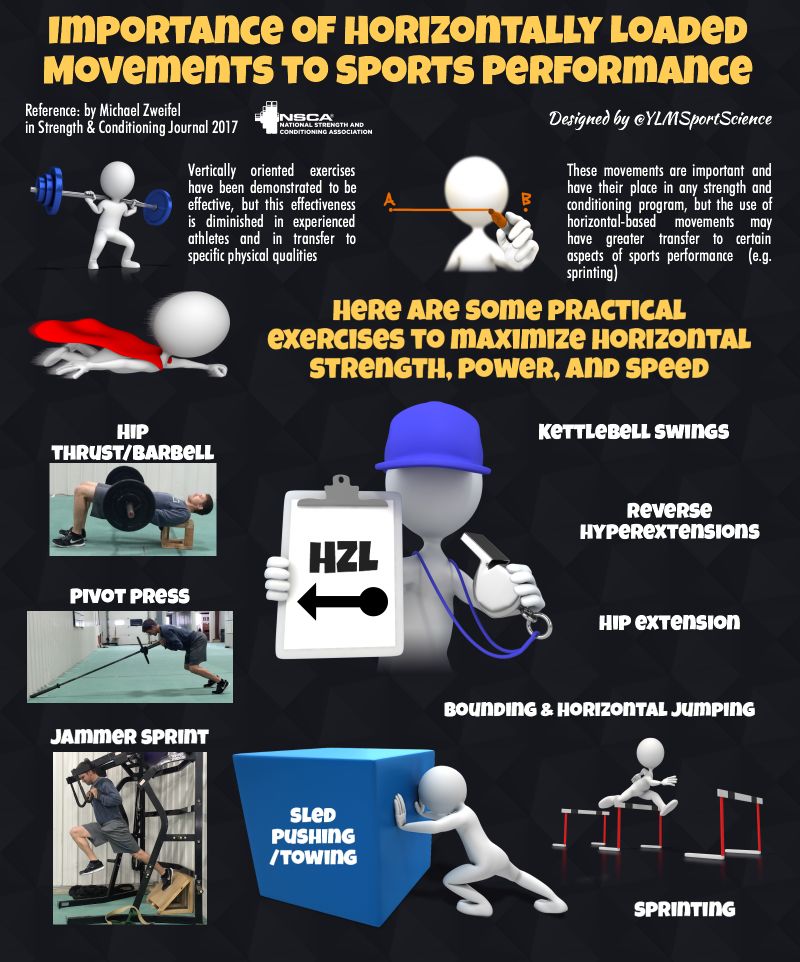
Capitalizing on ground balls is a pivotal aspect of lacrosse that often determines game outcomes. The team that can corral the most ground balls gains extra possessions and scoring chances. This is why regularly practicing scooping ground balls with lacrosse balls is so vital.
The scooping motion involves getting low to the ground for optimal leverage, raking the ball into the pocket, and transferring it to the cradle in one smooth sequence. Repetition ingrains proper technique so scooping becomes second nature. Scooping drills with lacrosse balls improves proficiency from all angles.
For example, placing the ball at different spots and distances challenges reaction time to sprint and scoop. Dropping balls from waist height mimics errant passes. Rolling balls out in front recruits coordinated footwork to run down shots. Tossing balls off walls varies trajectory angles. Scooping while defenders lightly check tests focus and possessive strength.
Using lacrosse balls when practicing scooping is crucial because the weight and feel mirrors actual game play. Developing the muscular memory and correct scooping mechanics requires consistent reps with regulation lacrosse balls. The increased force required to scoop a lacrosse ball versus a tennis ball, for instance, overloads the muscles to make game scooping easier.
Advanced scooping drills involve quick ball transfers from the ground to the stick head. Quick stick scooping in one motion improves speed and efficiency. Players can also work on scooping then immediately passing to a teammate or shooting on goal. Combining skills boosts overall ball control.
Since ground balls are a constant battle in lacrosse, being competent at scooping is a tremendous advantage. Drilling the fundamental motions into memory and strengthening the muscles involved leads to winning more ground ball possessions.
During game situations, players with refined scooping abilities can swiftly pounce on loose balls. Their lightning-fast reaction time and efficient form allows them to gain an extra step on defenders also giving chase. Developing scooping prowess helps turn 50/50 ground balls into wins for added offensive opportunities.
In summary, scooping drills using lacrosse balls are invaluable for improving this vital skillset. The equipment specificity reinforces proper technique and overloaded strength training. Making scooping second nature gives players an edge in ground ball battles that often swing momentum. Lacrosse players serious about getting better should devote time each practice session to scooping fundamentals.
Refine Passing and Catching with Lacrosse Ball Drills
Why are lacrosse ball drills so effective? The repetitive nature of these exercises helps players develop muscle memory, allowing them to execute complex movements with greater ease and precision during high-pressure game situations. Additionally, these drills target specific muscle groups in the hands, arms, and core, building the strength and endurance necessary for optimal stick control and ball handling.
Mastering the Art of Cradling with Lacrosse Ball Drills
Cradling is a fundamental skill in lacrosse that allows players to maintain possession of the ball while moving across the field. Lacrosse ball drills focused on cradling can dramatically improve a player’s ability to control the ball under various conditions.
Essential Cradling Drills to Enhance Ball Control
- Two-hand cradling in front of the body
- One-handed cradling across the body
- Figure-8 cradling around the knees
- Behind-the-back cradling while walking forward
- Speed cradling drills to improve hand speed and finger responsiveness
How do these cradling drills benefit players? By practicing these various techniques, players strengthen the muscles in their forearms, wrists, and hands, leading to improved ball control and retention, even when faced with defensive pressure. Moreover, these drills enhance hand-eye coordination, allowing players to maintain possession while running at full speed or executing complex dodges.

Perfecting Ground Ball Techniques Through Lacrosse Ball Drills
Securing ground balls is a critical skill in lacrosse, often determining possession and influencing the outcome of games. Lacrosse ball drills focused on ground ball techniques help players develop the proper form, speed, and instincts needed to excel in this aspect of the game.
Effective Ground Ball Drills to Improve Scooping Skills
- Stationary scooping drills
- Rolling ground ball pickups
- Contested ground ball drills (with a partner)
- Scoop and sprint exercises
- One-handed scooping practice
Why is practicing ground ball techniques so important? These drills help players develop the muscle memory required to quickly and efficiently scoop up loose balls in various game situations. By repeatedly practicing the proper technique of getting low, using leverage, and guiding the ball into the stick head, players can significantly improve their ability to gain possession during crucial moments in a game.
Enhancing Passing and Catching Skills with Lacrosse Ball Drills
Accurate passing and reliable catching are fundamental to successful lacrosse play. Incorporating specific lacrosse ball drills into training sessions can help players refine these essential skills, leading to improved ball movement and team coordination on the field.

Key Passing and Catching Drills for Skill Development
- Wall ball drills for solo practice
- Partner passing drills at various distances
- Quick stick passing exercises
- Behind-the-back and around-the-world passing practice
- On-the-run passing and catching drills
How do these drills improve a player’s passing and catching abilities? By consistently practicing these techniques, players develop better hand positioning, release mechanics, and follow-through for more accurate passes. Additionally, these drills enhance a player’s ability to catch errant throws and maintain possession under pressure, leading to more efficient ball movement during games.
Sharpening Shooting Skills Through Targeted Lacrosse Ball Drills
Shooting is perhaps the most critical skill in lacrosse, as it directly impacts a team’s ability to score and win games. Lacrosse ball drills focused on shooting techniques can dramatically improve a player’s accuracy, power, and overall scoring potential.
Essential Shooting Drills to Boost Scoring Ability
- Stationary shooting drills from various angles
- On-the-run shooting practice
- Step-down shot drills
- Question mark shot techniques
- Behind-the-back and underhand shooting exercises
What impact do these shooting drills have on a player’s performance? Regular practice of these drills helps players develop muscle memory for various shooting techniques, leading to improved accuracy and power. As players become more proficient in executing different types of shots, they become more versatile scorers, capable of beating goalies from various positions on the field.

Developing Defensive Skills with Lacrosse Ball Drills
While often overlooked, defensive skills are crucial for overall team success in lacrosse. Incorporating lacrosse ball drills that focus on defensive techniques can significantly enhance a player’s ability to disrupt opponents and regain possession.
Effective Defensive Drills to Improve Player Performance
- Footwork and positioning drills
- Stick checking exercises
- Interception and deflection practice
- 1-on-1 defensive drills
- Slide and recovery exercises
How do these defensive drills benefit players? By regularly practicing these techniques, players develop better footwork, positioning, and stick skills necessary for effective defense. These drills also improve a player’s ability to anticipate opponents’ movements, leading to more successful interceptions and caused turnovers during games.
Incorporating Lacrosse Ball Drills into Team Practice Sessions
While individual practice is essential, integrating lacrosse ball drills into team practice sessions can lead to improved overall team performance and cohesion. Coaches can design drill sequences that combine multiple skills, simulating game-like situations and fostering better teamwork.

Effective Ways to Implement Lacrosse Ball Drills in Team Practices
- Station-based drill rotations
- Competitive drill challenges
- Small-sided games focusing on specific skills
- Full-field drills incorporating multiple techniques
- Conditioning exercises combined with stick skills
Why is it important to incorporate these drills into team practices? By integrating lacrosse ball drills into team sessions, coaches can ensure that all players are developing essential skills consistently. This approach also allows for immediate feedback and correction, helping players refine their techniques more effectively. Moreover, practicing these skills in a team setting helps players learn to execute them under the pressure of game-like situations.
Tailoring Lacrosse Ball Drills for Different Skill Levels
Lacrosse ball drills can be adapted to suit players of various skill levels, from beginners to advanced athletes. By adjusting the complexity and intensity of these drills, coaches and players can ensure continuous improvement and engagement regardless of experience.

Customizing Drills for Different Skill Levels
- Beginner-friendly drills focusing on basic techniques
- Intermediate drills combining multiple skills
- Advanced drills simulating high-pressure game situations
- Position-specific drills for specialized skill development
- Progression-based drill sequences for steady improvement
How does tailoring drills to different skill levels benefit players? By providing appropriate challenges for each skill level, players can experience consistent growth and maintain motivation. Beginners can focus on mastering fundamental techniques, while more advanced players can push their limits with complex, game-like scenarios. This approach ensures that all players, regardless of their current abilities, can continue to improve and contribute to their team’s success.
Incorporating a diverse range of lacrosse ball drills into training regimens is crucial for player development at all levels. These exercises not only enhance individual skills but also contribute to better overall team performance. By focusing on fundamental techniques such as cradling, scooping, passing, catching, and shooting, players can develop the muscle memory and coordination necessary for success on the field.

As players progress in their lacrosse journey, they can gradually increase the complexity and intensity of these drills to continually challenge themselves and improve their game. Coaches play a vital role in designing and implementing effective drill sequences that cater to their team’s specific needs and goals.
Ultimately, the consistent practice of lacrosse ball drills leads to improved stick skills, better ball control, and enhanced decision-making abilities during game situations. Players who dedicate time to these fundamental exercises will find themselves better equipped to handle the challenges of competitive lacrosse, contributing more effectively to their team’s success.
By embracing a comprehensive approach to lacrosse ball drills that encompasses all aspects of the game, from offense to defense, players can develop into well-rounded athletes capable of excelling in various roles on the field. The key to maximizing the benefits of these drills lies in consistent practice, proper technique, and a willingness to push beyond comfort zones to achieve continuous improvement.

As the sport of lacrosse continues to grow in popularity and competitiveness, the importance of mastering fundamental skills through targeted drills becomes increasingly evident. Players and coaches who prioritize these exercises will find themselves at a significant advantage, able to adapt to the evolving strategies and techniques of modern lacrosse while maintaining a solid foundation in the core principles of the game.
In conclusion, lacrosse ball drills serve as an essential tool for player development, offering a myriad of benefits that directly translate to improved on-field performance. By incorporating these drills into regular training routines, players can enhance their stick skills, boost their confidence, and ultimately contribute more effectively to their team’s success. Whether you’re a beginner just starting your lacrosse journey or an experienced player looking to refine your skills, dedicating time to these fundamental exercises will undoubtedly pay dividends in your lacrosse career.

Introduce Lacrosse Ball Drills to Improve Stick Skills
Incorporating lacrosse ball drills into training regimens is a great way for players to boost their overall stick skills. These specialized drills using lacrosse balls provide a number of benefits that directly translate onto the field during gameplay. By spending time cradling, scooping, passing, catching, and shooting a lacrosse ball, players can strengthen the intricate hand and arm muscles used to adeptly control their sticks.
Cradling a ball around the head, shoulders, and waist with one hand or switching between hands targets the forearms, wrists, and hands. This repetitive motion improves cradling form, endurance, and overall ball control even when defending players attempt checks. Frequent cradling drills enhance hand-eye coordination required for maintaining possession while running down the field or dodging opponents. Gripping and maneuvering a lacrosse ball also augments hand and forearm strength necessary for secure holds and swift passes.
Scooping ground balls requires getting low for optimal leverage and quickly guiding the ball into the head of the stick in one fluid motion. Practicing this movement pattern with lacrosse balls at various angles and speeds helps ingrain proper technique. Muscle memory develops over time through ongoing scooping reps to capitalize on ground ball possessions.
The most elite lacrosse players have fast, accurate passes and can snag errant throws with ease. Throwing, catching, and quick stick passing drills using lacrosse balls helps engrain the footwork, hand positioning, release, and follow-through needed for pinpoint passing. Working on these mechanics smooths out the throwing and catching motion until it becomes second nature. Developing deft passing abilities provides a major advantage for efficiently moving the ball around the field.
Shooting is perhaps the most critical skillset in lacrosse as outscoring opponents is ultimately the name of the game. Shooting drills with lacrosse balls allow players to zero in on their shooting form and power from various angles around the goal crease area. Repeated practice establishes muscle memory for shooting on the run, step-down shots, question mark shots, behind-the-back shots, and other deceptive shooting maneuvers used to fake out goalies.
As players gain shooting proficiency over time, their shot speed, accuracy, and scoring percentages will improve dramatically. Defenders will have a much tougher time stopping lightning-quick shots that find the corners of the net.
In summary, incorporating lacrosse ball handling drills into training is crucial for taking stick skills to the next level. The repetitive motions build hand strength, endurance, control, passing, catching, scooping, cradling, and shooting prowess that translate into better performance during live game action. Players who are serious about maximizing their abilities should devote ample time to refining their fundamentals with lacrosse balls.
Improve Cradling Technique with Lacrosse Ball Drills

One of the key benefits of incorporating lacrosse ball drills into training is enhanced cradling ability. Cradling is the fundamental motion of swirling the ball in the pocket of the stick head in a continuous motion. Elite lacrosse players have mastered cradling to the point where they can maintain complete control of the ball while running at full speed down the field or dodging defenders.
Practicing cradling with lacrosse balls engrains proper form and strengthens the forearms, wrists, and hands. By cradling the ball around the head, shoulders, and waist areas in different motions and directions, players can target the intricate muscles involved in controlling the stick.
For example, starting with two-hand cradling directly in front recruits muscles in both arms and hands. Switching to one-handed cradling across the body also works the stabilizing muscles on the opposite side. Cradling figure-8s around the knees challenges dexterity and coordination. Tossing the ball up lightly and recradling smoothly develops quick reaction time. Cradling behind the back while walking forward forces an upright posture and activates core muscles.
These various cradling drills with lacrosse balls build hand-eye coordination required for maintaining possession while maneuvering on the field. The repetitive motions also increase forearm, wrist, and hand endurance. Stronger forearms allow for secure cradle control even as defenders try to dislodge the ball.
Speed cradling is another essential technique to practice. Quickly swishing the stick through the air while sprinting with fast footwork tests hand speed and finger responsiveness. Speed cradling drills build the dexterity needed to retain possession when dodging defenders at full velocity.
Advanced players can elevate the difficulty by cradling with both hands behind their backs or switching hands in a crossover cradling motion. Mastering these moves takes cradling competence to the highest levels.
By dedicating sufficient time to lacrosse ball cradling drills, players engrain proper form until it becomes second nature. The motions build endurance, strength, control, hand-eye coordination, and quick reaction time. Developing a high cradling IQ is crucial for maintaining possession in crowded game situations. Players with crisp cradling capabilities have a distinct edge over opponents when advancing the ball upfield or attacking the goal.
In summary, lacrosse ball cradling drills are invaluable for honing this fundamental skillset. The repetitive practice isolates and strengthens the muscles involved while improving overall cradling efficiency, dexterity, and control. Players who are serious about maximizing their abilities should incorporate a variety of cradling drills into their training routines.
Boost Scooping Skills with Lacrosse Ball Drills

Capitalizing on ground balls is a pivotal aspect of lacrosse that often determines game outcomes. The team that can corral the most ground balls gains extra possessions and scoring chances. This is why regularly practicing scooping ground balls with lacrosse balls is so vital.
The scooping motion involves getting low to the ground for optimal leverage, raking the ball into the pocket, and transferring it to the cradle in one smooth sequence. Repetition ingrains proper technique so scooping becomes second nature. Scooping drills with lacrosse balls improves proficiency from all angles.
For example, placing the ball at different spots and distances challenges reaction time to sprint and scoop. Dropping balls from waist height mimics errant passes. Rolling balls out in front recruits coordinated footwork to run down shots. Tossing balls off walls varies trajectory angles. Scooping while defenders lightly check tests focus and possessive strength.
Using lacrosse balls when practicing scooping is crucial because the weight and feel mirrors actual game play. Developing the muscular memory and correct scooping mechanics requires consistent reps with regulation lacrosse balls. The increased force required to scoop a lacrosse ball versus a tennis ball, for instance, overloads the muscles to make game scooping easier.
Advanced scooping drills involve quick ball transfers from the ground to the stick head. Quick stick scooping in one motion improves speed and efficiency. Players can also work on scooping then immediately passing to a teammate or shooting on goal. Combining skills boosts overall ball control.
Since ground balls are a constant battle in lacrosse, being competent at scooping is a tremendous advantage. Drilling the fundamental motions into memory and strengthening the muscles involved leads to winning more ground ball possessions.
During game situations, players with refined scooping abilities can swiftly pounce on loose balls. Their lightning-fast reaction time and efficient form allows them to gain an extra step on defenders also giving chase. Developing scooping prowess helps turn 50/50 ground balls into wins for added offensive opportunities.
In summary, scooping drills using lacrosse balls are invaluable for improving this vital skillset. The equipment specificity reinforces proper technique and overloaded strength training. Making scooping second nature gives players an edge in ground ball battles that often swing momentum. Lacrosse players serious about getting better should devote time each practice session to scooping fundamentals.
Refine Passing and Catching with Lacrosse Ball Drills
Precision passing and secure catching is imperative for marching the ball up the field and setting up scoring chances in lacrosse. Dedicated passing and catching drills using lacrosse balls helps develop the footwork, mechanics, vision, and coordination required to connect on catches and hit receivers in stride.
Repetitive passing and catching motions with lacrosse balls engrain proper throwing, catching, and quick stick techniques. The weight and feel of lacrosse balls provides realistic tactile feedback to program muscle memory patterns.
Drills should incorporate stationary catching, running catches, quick stick catches, and passing to targets. For instance, players can work on bullet passes to teammates 5 to 10 yards away then immediately passing back. Throwing balls off walls and catching the rebounds sharpens reaction time. Having receivers run various routes and pass at different angles challenges precision aim.
Advanced passing and catching drills involve simulated game elements. Defenders can lightly check receivers as balls are thrown to increase difficulty. Passers can catch and throw in one motion or pass and move to open space. Calling out colors or numbers as balls are caught and passed back enhances focus under pressure.
Perfect practice makes perfect, so continually rehearsing proper footwork, mechanics, and coordination for passing and catching is key. Accurate throwing requires stepping towards the target, generating power from the legs and core, snapping the wrist on release, and following through. On catches, receivers should cradle the pocket and absorb the impact by pulling the stick head in towards the body.
Developing swift, pinpoint passing with deceptive fakes will keep defenses guessing. Precision catches allow teams to retain possession and avoid turnovers. Split second timing and trust between passers and receivers builds a potent offensive attack.
In summary, dedicated passing and catching repetitions using lacrosse balls engrains correct technique and hand-eye coordination required in games. The equipment specificity reinforces muscle memory to execute smooth catches and accurate passes. Mastering passing and catching gives teams an upper hand by enabling efficient ball movement, retention, and scoring opportunities.
Heighten Shooting Ability with Lacrosse Ball Drills
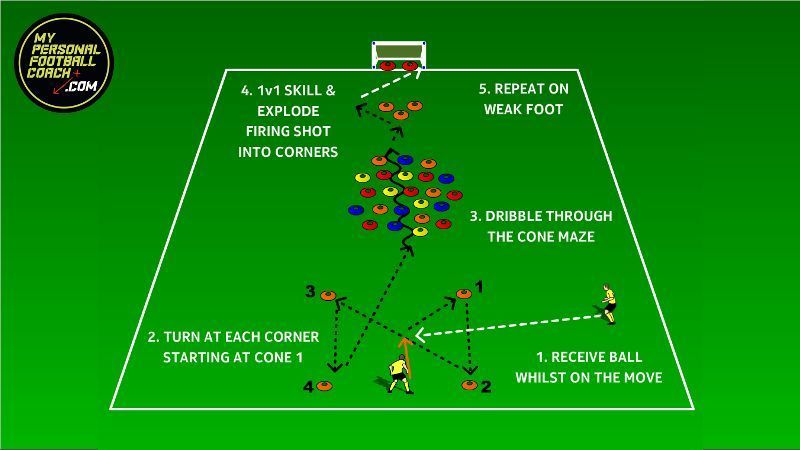
Scoring goals is the ultimate objective in lacrosse. Developing a strong shooting arsenal separates the most dangerous goal scorers from the rest. That is why shooting drills using lacrosse balls are a staple of training regimens.
Repetitive shooting practice with lacrosse balls ingrains proper shooting mechanics and strengthens shooting muscles. The specific weight and feel compared to other balls enhances body awareness and control. Shooting drills also build accuracy, power, and overall scoring effectiveness from diverse angles.
For example, players can rehearse sidearm shots, overhand shots, question mark shots, behind-the-back shots, quick sticks, step downs, rolls, bouncers, and other deceptive maneuvers. Varying shot speed, accuracy, and locations also improves versatility.
Drills should incorporate shooting on the run, shooting off dodges, shot fakes, shooting under pressure, and catch-and-shoot scenarios. Changing body and hand positioning relative to the goal and defenders overloads key muscles. Shooting games with point systems and competitions raises intensity.
Advanced shooters can elevate degree of difficulty by shooting farther out, through confined spaces, or with anchor knots in the net. The repetitious shooting motions engrain proper footwork, weight transfers, release points, and follow through for accuracy.
Shooting drills breed confidence in game situations. They help commit shot mechanics to muscle memory so players can react on instinct when scoring chances arise. A potent shot arsenal also keeps goalies off balance since they must respect multiple scoring threats.
In summary, no practice regimen is complete without lacrosse ball shooting drills. The equipment specificity enhances skill development for lighting up the scoreboard. Master shooters have an invaluable advantage that can propel teams to victory in close contests.
Isolate Lacrosse Muscles with Ball Drills
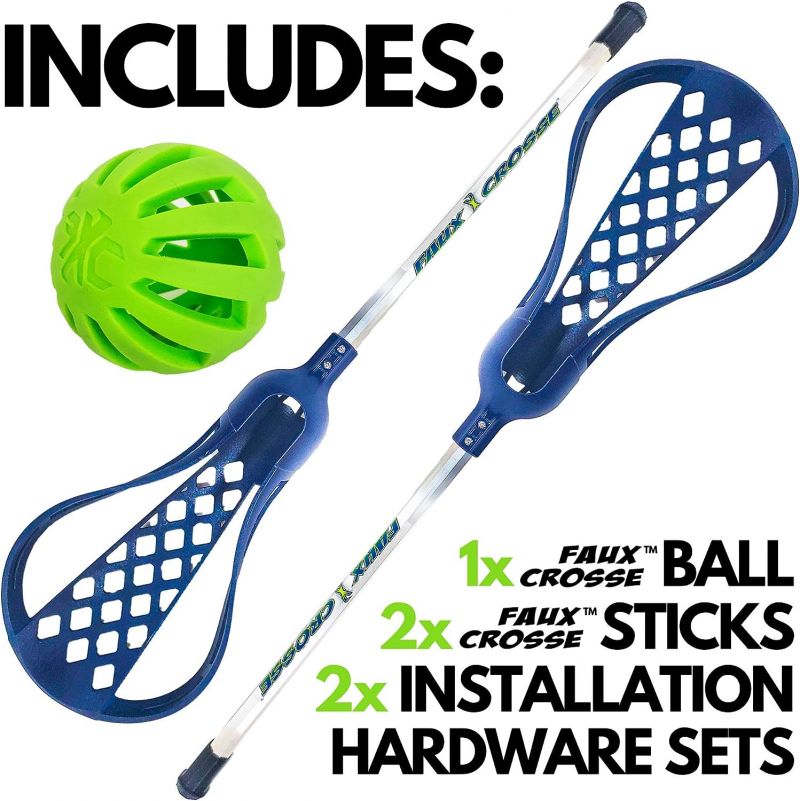
Lacrosse requires tremendous coordination between the hands, arms, and core muscles to adeptly handle the stick. Isolating and strengthening the major muscle groups used in lacrosse is crucial for taking skills to the highest level.
Specialized lacrosse ball drills target the intricate forearm, wrist, hand, shoulder, and abdominal muscles involved in cradling, scooping, passing, catching, and shooting. The constant cradling motions recruit forearm and grip strength. Scooping ground balls overloads the shoulders and back. Accurate passing involves the rotator cuffs. Shooting and checking rely heavily on core power.
Repetitive drills with lacrosse balls engrain proper mechanics while also serving as targeted strength training. For example, extended cradling reps build endurance in forearm and hand muscles. Tossing balls against walls and scooping improves fast-twitch shoulders muscles. Rapid fire passing at close range challenges rotator cuff stamina. Quick stick shooting drills train explosive core engagement.
Varying body positioning and movement patterns keeps muscles from adaptable. Cradling behind the back, between the legs, and at high/low levels trains mobility. Leaning and twisting across the body when scooping and passing improves range of motion. Shooting on the run from different angles recruits stabilizer muscles.
Isolated strength training also helps identify and correct muscle imbalances that can undermine performance and lead to injury if left unaddressed. Weakness in certain arm, shoulder, core or back muscles gets exposed with lacrosse ball drills.
Dedicated lacrosse ball training provides a targeted workout for the specific muscle groups used in gameplay. Building strength, endurance, and balancing muscle groups generates more power and control to dominate on the field.
In summary, lacrosse ball drills isolate the intricate muscles involved in stick skills more than any other training. The sport-specific overload boosts weak links, corrects imbalances, and develops the coordination for executing skills at the highest levels.
Increase Mobility with Lacrosse Ball Drills
Lacrosse requires tremendous range of motion to effectively maneuver the stick in tight spaces. Mobility drills using lacrosse balls enhance flexibility and dexterity in the shoulders, wrists, back and hips.
The constant cradling, scooping, passing, catching and shooting motions in lacrosse demand full rotational range of motion. Restrictions in the joints, tendons or surrounding muscles undermine performance and control.
Dedicated mobility drills with lacrosse balls open up tight spots for better function. For example, cradling circles and figure 8s around the knees, ankles, behind the back and overhead loosens up rigid shoulders. Squatting down to scoop ground balls recruits proper hip hinge mechanics and spinal mobility.
Twisting the torso fully when passing right to left and vice versa frees up the obliques and lower back. Rotating the wrists fully when stick handling improves dexterity. Shooters benefit from mobilizing the hips, core and shoulders to unload from diverse body positions.
Players can also roll lacrosse balls under their back, hips and shoulders during dynamic warm-ups. Applying pressure and rolling over knotted areas helps break up restricted tissues before activity. This releases built up tension that limits free movement.
Dedicated mobility training corrects any deficiencies over time. The increased pliability and range of motion gives players an edge in puck control. With no restrictions, players can smoothly cradle, pass and shoot from all angles.
In summary, lacrosse ball mobility drills improve rotational range of motion and unlock stiff joints for better performance. The dynamic nature of the sport requires limberness and flexibility training for fluidity of motion. Proper mobility allows executing skills efficiently and helps prevent injury.
Release Muscle Trigger Points with Lacrosse Balls
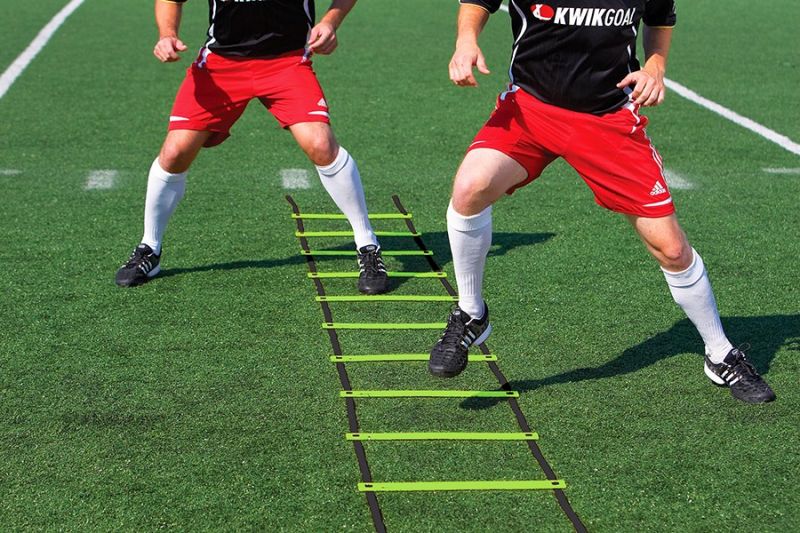
The repetitive motion patterns in lacrosse can create trigger points in muscles and connective tissues. These hyperirritable knots undermine movement and performance. Applying pressure with lacrosse balls helps alleviate muscle trigger points.
Trigger points develop from sustained contractions and overload stress. Cradling places constant tension on forearm muscles. Scooping ground balls can knot up the upper back. Passing strains the rotator cuffs. Shooting tightens the shoulders and core.
These sensitive, rigid knots cause localized pain when compressed. Trigger points also restrict circulation and flexibility in the surrounding tissues. This impairs full-range motion and power generation.
Applying sustained inward pressure on trigger points with lacrosse balls helps release adhesions. Rolling over tight spots like the forearms, rotator cuffs, upper back and hips provides a targeted massage.
Players can use extra firm balls and even lacrosse shafts on denser problem areas. The constant inward pressure along with breathing deeply helps relax the tense muscles. Increased blood flow to the area also speeds recovery.
Alleviating chronic trigger points restores mobility and function. Muscles return to their optimal length without compensation which prevents re-injury. Releasing muscle adhesions also reduces aches and dysfunction after intense gameplay.
In summary, lacrosse balls are effective self-massage tools for targeting painful muscle trigger points. Applying direct pressure decreases knotted tissues that develop from repetitive strain. Keeping muscles supple optimizes performance and aids recovery from demanding training and competition.
Loosen Tight Shoulders and Back with Lacrosse Balls

The shoulders and upper back are heavily involved in virtually all lacrosse skills. These areas often become tight and restricted, limiting range of motion. Applying pressure with lacrosse balls helps loosen up rigid shoulders and back muscles.
The constant overhead motions of cradling, passing, catching, checking and shooting places enormous strain on shoulder and scapular muscles. Repeated scooping recruits the upper back. This tightens the surrounding tissues over time.
Restrictions in the shoulders and back undermine mobility needed to adeptly handle the stick. Limited range impairs efficiency when passing, shooting and checking. Tightness also contributes to poor posture which reduces power.
Targeted massage with lacrosse balls releases adhesions in knotted muscles and connective tissue. Rolling along the shoulders blades, rotator cuffs, deltoids, rhomboids and thoracic spine breaks up restrictions. This pressure flushes blood flow to tight areas for natural pain relief.
Players can pinpoint specific problem spots by monitoring areas of tenderness. Breathing deeply during inward pressure maximizes relaxation response. Sustained rolling restores proper tissue pliability.
Keeping shoulders and back supple maintains ideal biomechanics for athletic skills. The increased flexibility and pain relief also aids recovery between competitions and prevents compensatory overuse patterns.
In summary, lacrosse ball massage alleviates tight, painful shoulders and back from repetitive strain. Restoring mobility to these overworked areas optimizes performance and helps reduce injury risk.
Prepare Hands and Wrists for Gameplay with Lacrosse Balls
Developing strong, dexterous hands and wrists is imperative for lacrosse players. The tight cradle control, scooping, passing, catching and shooting all rely heavily on hand and wrist function. Targeted lacrosse ball drills prepare these areas for the demands of competition.
The constant cradling motions build grip strength and forearm endurance to maintain possession. Scooping ground balls strains the wrists when absorbing contact. Swift accurate passing involves wrist snap. Catching 65+ mph shots challenges hand-eye coordination.
Repetitive motions with lacrosse balls develops the muscles, tendons and joints for optimal performance. Cradling in multiple planes strengthens intrinsic hand muscles. Scooping drills reinforce proper wrist alignment to avoid injury. Targeted wrist curls and extensions boost pliability.
Ball massage alleviates tension in the forearms and hands from overuse. Kneading palms and fingertips maintains dexterity. Gripping and releasing motions encourage proper hand activation and recovery between reps.
Well-conditioned hands and wrists withstand the rigors of gameplay. Developing strength, flexibility and technique provides players a distinct advantage in ball control. Prepared wrists also better absorb checks and shots leading to fewer turnovers and injuries.
In summary, hands and wrists are vulnerable to overuse and injury in lacrosse’s high velocity gameplay. Targeted development with lacrosse balls optimizes these delicate areas for competition. Their enhanced durability, coordination and dexterity breeds confidence carrying, passing and catching.
Activate Stabilizing Muscles with Lacrosse Balls
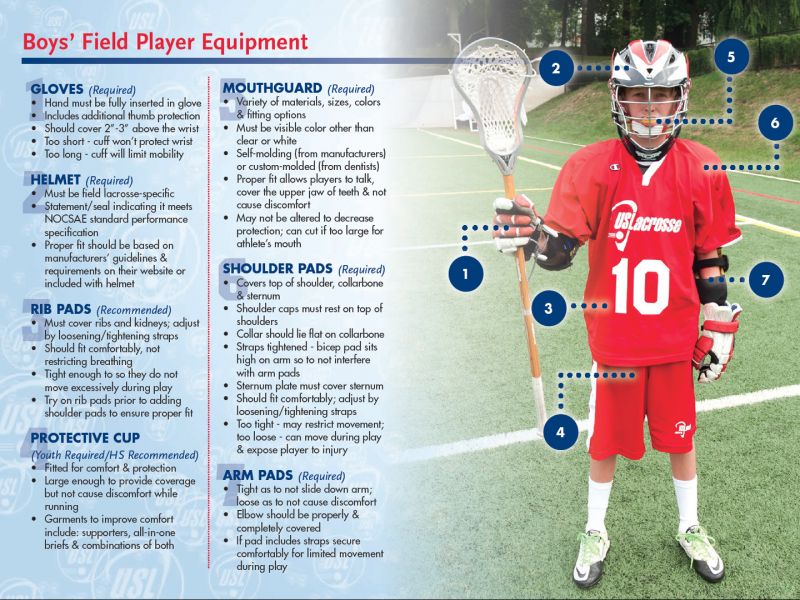
Lacrosse relies heavily on core and shoulder stability when maneuvering the stick. Engaging the small stabilizer muscles is crucial yet often neglected. Targeted lacrosse ball drills activate and strengthen these overlooked stabilizers.
Common lacrosse motions like cradling, shooting and passing primarily train the large prime movers like the pecs, deltoids and rectus abdominis. However, the smaller rotator cuff, scapular and spinal stabilizers are equally important.
These stabilizers act as muscular corsets to provide a strong foundation. Weak or dormant stabilizers reduce rotational force and undermine efficient motion. This negatively impacts stick skills and ball velocity.
Lacrosse ball drills isolate stabilizers by forcing players to resist movement in all planes. Walking with side-to-side cradling engages obliques. Scooping balls tossed at varying angles fires spinal muscles. Quick lateral shuffle passing activates the core.
Performing these drills on unstable surfaces like balance boards adds difficulty by recruiting more support muscles. Targeted training wakes up lazy stabilizers to pull their weight.
Stronger stabilizers provide a muscular back brace for power generation. Their enhanced support also improves posture and body control to excel during intense gameplay.
In summary, lacrosse ball drills are incredibly effective for developing weak stabilizer muscles overlooked in training. Activating these vital supporters improves performance, efficiency and injury prevention.
Promote Proper Recovery with Lacrosse Balls
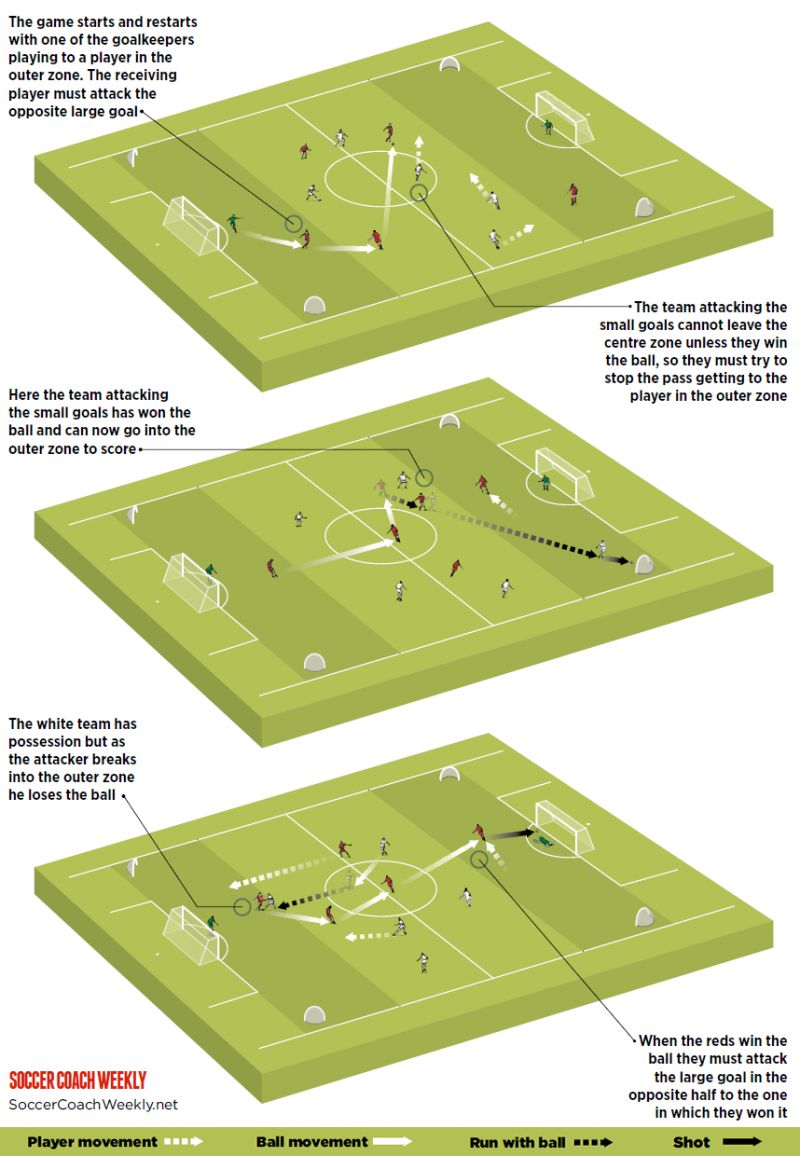
The intense, high-impact nature of lacrosse takes a heavy toll on the body. Proper recovery is paramount to optimizing performance and resilience. Lacrosse balls help speed muscular recovery between competitions and training sessions.
The constant sprinting, cutting, physical contact, and repetitive motions in lacrosse creates strain and delayed onset muscle soreness. Lactic acid and other waste byproducts accumulate in tissues, causing stiffness and restricted range of motion.
Applying pressure with lacrosse balls helps alleviate sore, fatigued muscles by increasing blood flow to affected areas. Kneading and rolling tight spots flushes out metabolic waste for faster recovery.
Targeting common trouble areas like the calves, hamstrings, quadriceps, hip flexors, shoulders and back provides a therapeutic self-massage. Players can customize pressure based on personal tolerance and pinpoint specific tight, tender regions.
Enhanced circulation and tissue repair from lacrosse ball massage restores normal muscle length and function. The localized pressure also reduces painful muscle spasms and trigger points.
Dedicated self-myofascial release optimizes physical readiness between competitions. Quickly addressing fatigue and soreness allows players to practice and perform at their highest level.
In summary, lacrosse balls are invaluable recovery tools to rejuvenate the body from demanding training and games. The therapeutic effects increase flexibility, alleviate soreness, and speed overall muscle recovery for sustained performance.
Prevent Injuries with Lacrosse Ball Drills
Lacrosse’s dynamic, high-contact nature makes players susceptible to overuse injuries. However, targeted lacrosse ball training can reduce injury risk in key areas through injury-resilient conditioning.
Repetitive overhead motions can irritate shoulders and lead to debilitating rotator cuff strains. Excessive scooping causes upper back and neck issues. Constant cradling creates wrist and forearm tendonitis.
Dedicated strength training with lacrosse balls bolsters vulnerable muscles and connective tissues against breakdown. For example, rotator cuff exercises strengthen the shoulders for the rigors of checking and shooting. Wrist stability drills prevent tendon overstretching.
Increased muscular endurance from lacrosse ball drills also enhances durability and resilience. Scooping reps condition the neck and upper back for ground ball battles. Passing drills protect elbows from excessive torque.
Myofascial release using balls alleviates muscle adhesions and scar tissue before they accumulate and cause chronic pain. This helps deter nagging soft tissue injuries.
Strong, flexible muscles better withstand repeated overload stress. The prehabilitation effects make them more damage resistant when the intensity ramps up.
In summary, integrating lacrosse ball drills develops injury-resistant tissues capable of withstanding harsh gameplay demands. Bolstering vulnerable areas reduces overuse damage for long-term health and performance.
Correct Muscle Imbalances with Lacrosse Balls
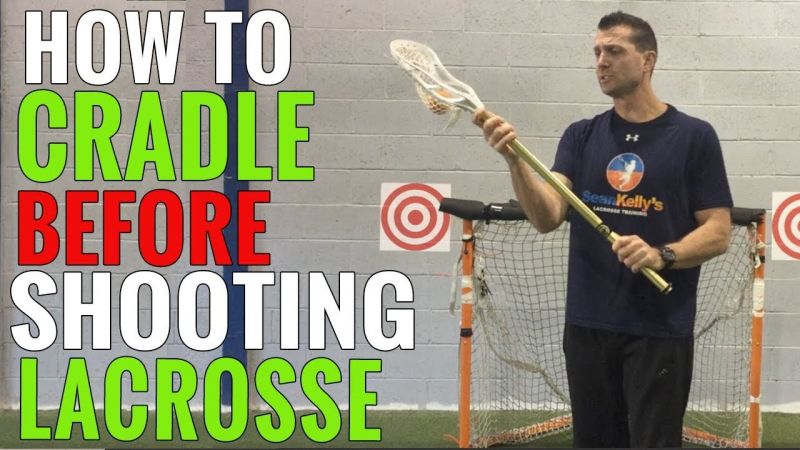
Muscle imbalances are common in lacrosse players given the sport’s one-sided, repetitive nature. Left unattended, these imbalances can undermine performance and increase injury risk. Targeted lacrosse ball drills help correct strength deficits between sides.
Favoring the dominant hand when cradling, passing and shooting leads to overdeveloped muscles on that side. Scooping ground balls can create upper crossed syndrome from tight pecs and weak rhomboids. Rotator cuff and scapular weaknesses destabilize the shoulders.
Unbalanced muscles reduce kinetic chain synchrony and control. Weaker muscle groups get overpowered, straining nearby structures. This impairs optimal mechanics.
Purposeful lacrosse ball drills counteract imbalances by isolating and overloading deficient sides. For example, extra reps focused on the weaker hand and wrist strengthens these areas. Unilateral core exercises correct side-to-side abdominal and back weaknesses.
Unstable surface training forces weaker stabilizers to work harder. Crossover drills like switching hands cradling bolster coordination between sides. Targeted myofascial release alleviates stiffness on limited sides.
Balancing musculature optimizes symmetry, mobility and power transfer. Correcting deficiencies prevents compensation patterns that heighten injury risk. Restored balance generates efficient mechanics.
In summary, lacrosse ball training is invaluable for identifying and correcting strength imbalances built up from repetitive strain. Targeting deficient areas evens out the body for fluid mechanics, increased performance and injury resilience.
Minimize Injuries with Lacrosse Ball Drills
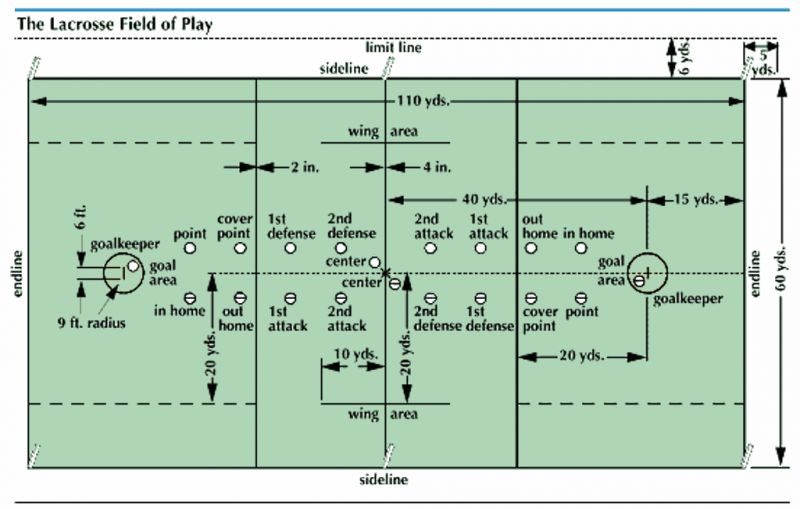
Lacrosse’s dynamic, high-impact nature makes players prone to injuries. However, incorporating lacrosse ball drills can bolster vulnerable areas and optimize mechanics to reduce injury risk.
The repetitive overhead motions can irritate shoulders and lead to debilitating rotator cuff strains. Excessive scooping causes neck and upper back issues. Constant cradling creates wrist and forearm tendonitis.
Targeted strength training with lacrosse balls builds up vulnerable muscles and connective tissues. For example, rotator cuff exercises using resistance bands strengthen the shoulders against repetitive strain. Wrist stability drills prevent overstretching.
Increased muscular endurance from lacrosse ball drills also enhances durability and resilience. Scooping reps condition the neck and upper back for ground ball battles. Passing drills protect elbows from excessive torque.
Myofascial release techniques help deter nagging soft tissue injuries. Rolling out knots and adhesions prevents accumulation of scar tissue that restricts motion and causes chronic pain.
Dedicated conditioning prepares the body for game intensity while optimizing mechanics. Strong, flexible muscles better withstand repeated overload stress. Prehabilitation makes tissues damage-resistant.
In summary, integrating lacrosse ball drills develops an injury-resistant body capable of withstanding gameplay’s harsh demands. Bolstering vulnerable areas, correcting imbalances, and enhancing mechanics reduces injury risk for long-term health and performance.